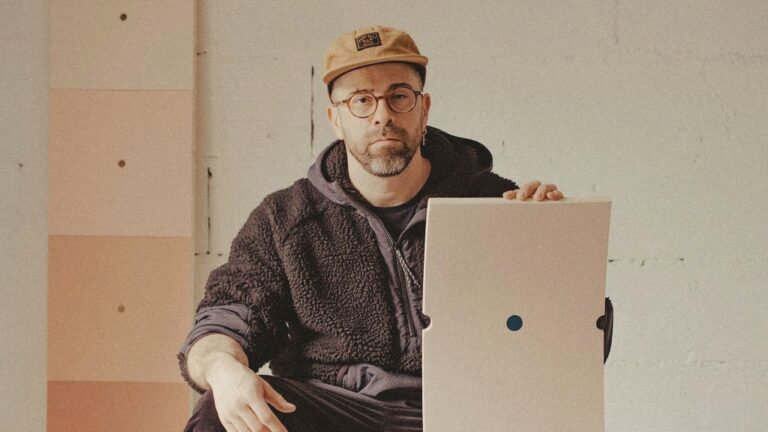
A Conversation with Alejandro Javaloyas
A Studio Visit During the La BIBI Residency
Adrian Ghenie, born in Baia Mare, Romania, in 1977, lives and works in Berlin, Germany. Ghenie is one of the world’s leading artists and has been working with Tim Van Laere Gallery for over a decade now. His work is internationally lauded for his visual imagery of dynamic arrangements, colorful collage compositions, strong impastos, and art historical references bound by an eclectic approach, but also for its wit, humor, and critical mind. These new works are displayed across two different rooms, or rather, volumes of the gallery. The new gallery space – opened in 2019 with the group show KUNST KUNST KUNST including Adrian Ghenie, Jonathan Meese (b. 1970), and Rinus Van de Velde (b. 1983) – consists of a warm wooden floor, a monumental ceiling height, and a combination of daylight and artificial lighting.
The first volume of these two different rooms is not only monumental in height but also in square meters. This abundant amount of space is followed by Ghenie’s characteristically larger dimensions of his paintings, exhibiting three large works on the three major walls of the first room. As soon as we enter this space, the three works in question bedazzle the viewer with color, flowing shapes, and dynamic arrangements. At this point, it is actually really nice as a spectator to have this space to wander in and lurk at the monumental paintings from a distance. One notices a horizon in all three of them, populated by figures in a state of action carried by an often mystical – or historical – narrative.
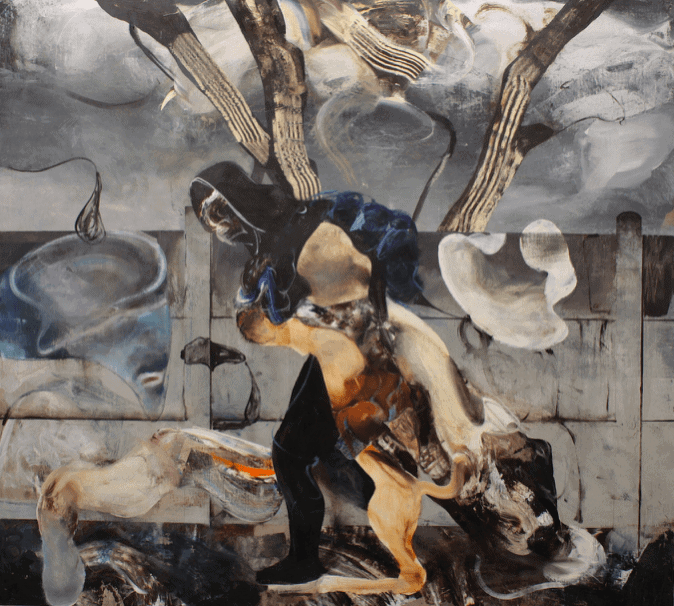
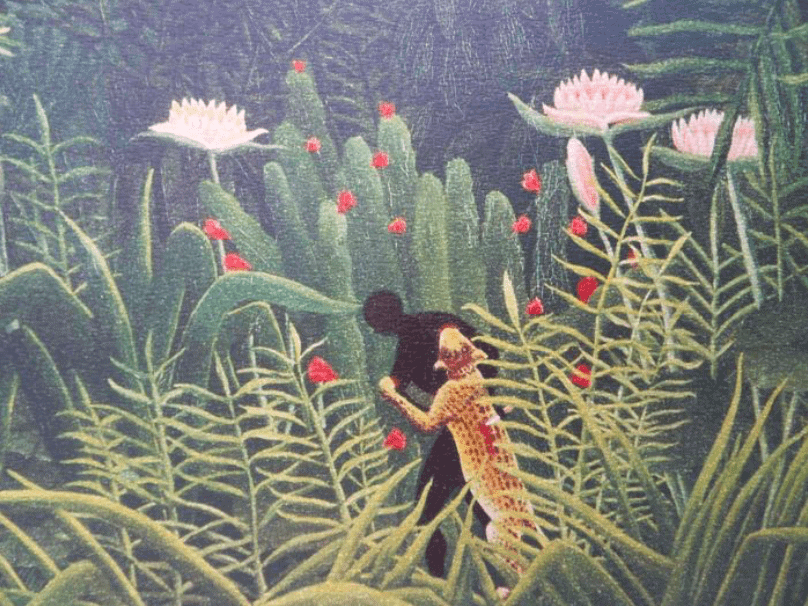
For instance, in the monumental painting Untitled (after Henri Rousseau) (2020), Ghenie reinterprets in his own eclectic manner La Panthère by the French Post-Impressionist Henri Rousseau. Ghenie reworked the panther, struggling with the black figure, and swapped the idyllic setting dominated by flowers and plants with a raw concrete occlusion (see images below). Further, one of the first images one sees when entering the room is the painting Medusa (2020) (see image at the top of the page), combining Greek mythology with the history of Nazi Germany. The third monumental painting is titled The Exodus (2020), a direct reference to immigration and the immigration crisis (see image below).
Further, we encounter several smaller works, including two charcoal drawings in the first space. As we walk closer to the wall analyzing these works, I continue to lose myself in the so-called écriture of the artist, in particular with the charcoal drawings. The lines of the shapes in his monumental works, as with these smaller works, seem to be completely balanced. This balance consists of the same visual exercise, rocking between abstract expressionism and figuration. This art historical perspective seems to be ubiquitously present, indirectly as well as directly, for instance, with Self-portrait with Picassoesque Background (2020) (see image below). From a technical point of view, being a painter myself, Ghenie’s works are extremely impressive. The appliance of paint shows no trace of hesitation, indicating strong accuracy and decisiveness. The virtuoso impasto’s strong contrasts and complexity of his compositions symbolize both technical mastery and visual abundance, a Dionysian visual language embraced by an Appolin application.
As we continue our exhibition visit, we enter the second space of the gallery. Unlike the previous room, the space is perceived as narrow instead of wide and open. The monumental height of the ceiling, in combination with Ghenie’s meaty palette and large dimensions, emphasizes a feeling of vertical indigo, resulting in a different sensation of the artwork. One of my absolute favorites from this show can be found in this specific space, titled The Prophet (2020). The stumbling crucifix and the enigmatic central figure seem to emanate directly from a sublime hallucination as a painted collage.
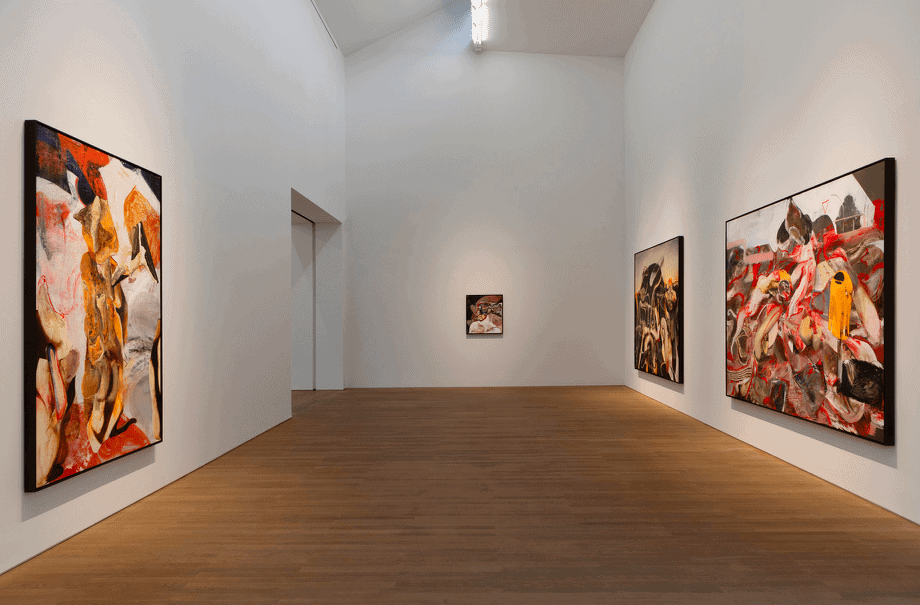
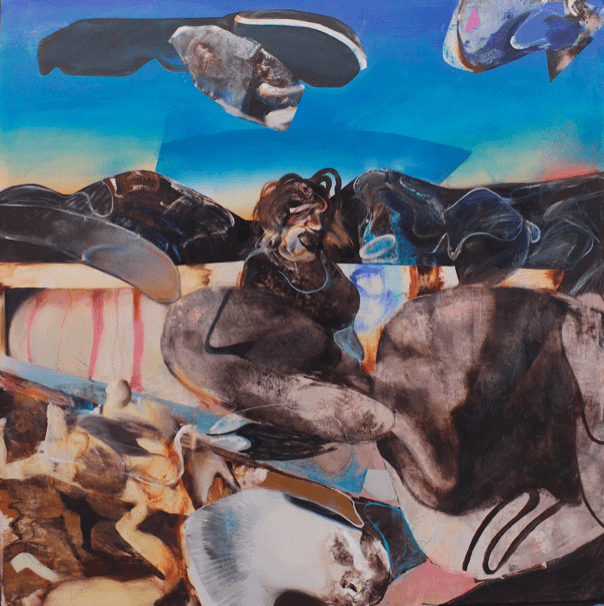

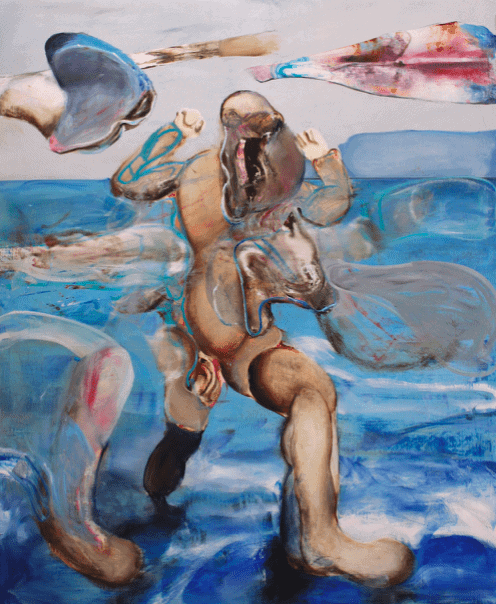
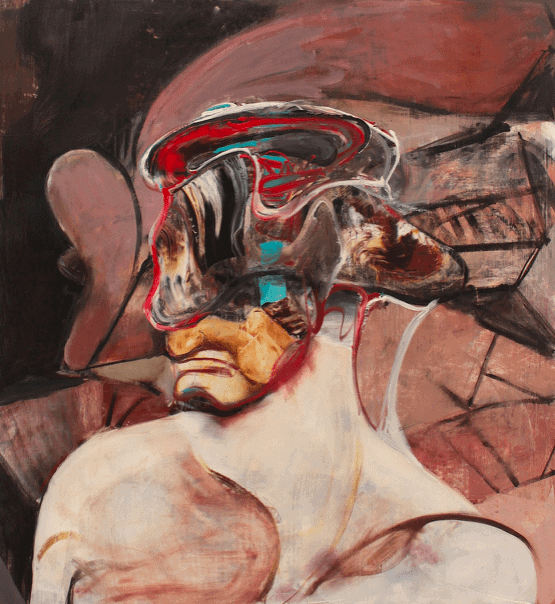
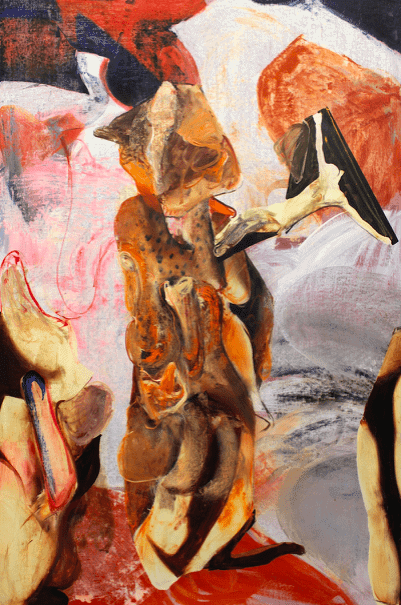
Last Updated on May 23, 2023

A Studio Visit During the La BIBI Residency
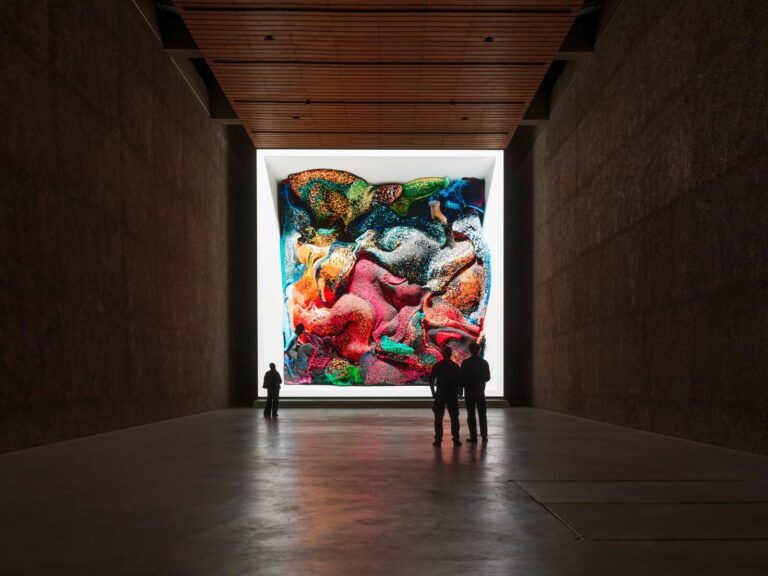
A Reasoned Anthology